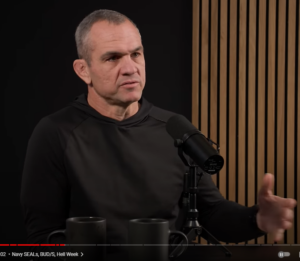As we journey through life, staying active becomes more than just a way to keep fit—it’s a vital component of aging well. I’ve always believed that movement is medicine, and with the right exercises, we can maintain our vitality, strength, and independence well into our golden years. Let’s explore some of the best workouts that can help seniors stay strong, flexible, and full of life.
The Importance of Staying Active
First and foremost, it’s essential to understand why staying active is so crucial as we age. Regular exercise helps maintain muscle mass, bone density, and joint flexibility—all of which are key to staying mobile and preventing falls. It also boosts cardiovascular health, supports mental well-being, and can even enhance our mood by releasing those feel-good endorphins.
But beyond the physical benefits, I’ve found that exercise is a powerful way to stay connected to ourselves and our bodies. It’s a reminder that we are capable, resilient, and vibrant at any age.

Walking: The Simple Yet Powerful Workout
Let’s start with something that doesn’t require any special equipment or gym membership—walking. Walking is one of the most accessible and effective forms of exercise for seniors. It’s low-impact, easy to adjust to your fitness level, and can be done almost anywhere.
What I love about walking is that it’s more than just exercise; it’s a chance to connect with nature, clear the mind, and breathe in fresh air. Whether it’s a leisurely stroll through the neighborhood or a brisk walk in the park, this simple activity can do wonders for both the body and spirit.
Strength Training: Building and Maintaining Muscle
As we age, maintaining muscle mass becomes increasingly important. Strength training helps counteract the natural muscle loss that occurs with aging, keeping us strong and capable of performing everyday tasks with ease.
Incorporating light weights or resistance bands into your routine can make a significant difference. Exercises like bicep curls, leg lifts, and seated rows are excellent for building strength. For those new to strength training, starting with bodyweight exercises, such as squats, wall push-ups, and chair stands, is a great way to begin.
Remember, it’s not about lifting heavy weights; it’s about consistency and gradually increasing resistance to challenge your muscles.
Flexibility and Balance: Yoga and Tai Chi
Flexibility and balance are two areas that often get overlooked, but they are vital for preventing falls and staying agile. I’ve always been a big advocate of yoga and Tai Chi for seniors. Both practices focus on gentle movements, stretching, and balance, which are crucial for maintaining mobility.
Yoga helps improve flexibility, strength, and mental clarity. Poses like the seated forward bend, gentle twists, and supported warrior pose can be particularly beneficial for seniors. Plus, the mindful breathing that accompanies yoga can also reduce stress and promote relaxation.
Tai Chi, on the other hand, is a martial art that combines slow, flowing movements with deep breathing. It’s often described as “meditation in motion” and is excellent for enhancing balance, coordination, and mental focus. The gentle nature of Tai Chi makes it an ideal exercise for seniors, helping to improve overall body awareness and reduce the risk of falls.
Swimming and Water Aerobics: Low-Impact, High Benefit
For those looking for a low-impact workout that’s easy on the joints, swimming and water aerobics are fantastic options. The buoyancy of water supports the body, reducing stress on the joints while still providing resistance to build strength.
Swimming laps can improve cardiovascular health, while water aerobics classes offer a fun way to work out in a group setting. The resistance of the water adds an extra challenge to movements, helping to tone muscles without putting undue strain on the body.

Staying Motivated and Making Exercise Fun
One of the keys to maintaining an exercise routine is finding activities that you genuinely enjoy. Whether it’s dancing, gardening, or even playing with grandchildren, movement comes in many forms. The important thing is to stay active and make exercise a regular part of your life.
I also find that setting small, achievable goals helps keep motivation high. Whether it’s aiming to walk a certain number of steps each day or mastering a new yoga pose, these milestones can make the journey more rewarding.
Final Thoughts
Aging well is about embracing life with energy and enthusiasm, and exercise is a cornerstone of that philosophy. By staying active, we not only preserve our physical health but also nurture our mental and emotional well-being. Whether you’re new to exercise or have been active your whole life, it’s never too late to start. Let’s move with joy, celebrate our bodies, and continue to live life to the fullest.




